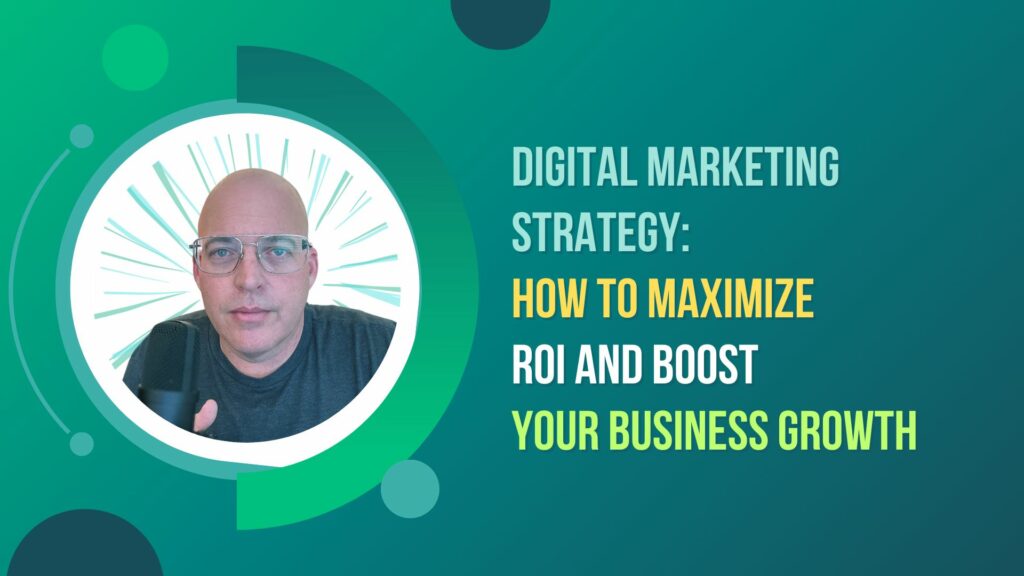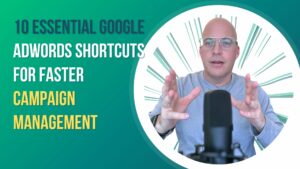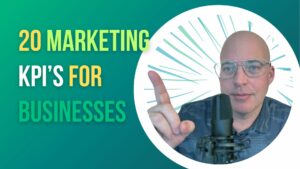In digital marketing, the primary objective is to generate a return on investment (ROI) for the business. ROI is a metric to measure the performance of your marketing efforts and determine if they are generating enough revenue to justify their cost. ROI can be calculated by dividing a digital marketing strategy campaign’s net profit by price.
For example, if a business spends $10,000 on a digital marketing strategy campaign and generates $20,000 in revenue, its ROI would be 100%. This means that they earned two dollars in revenue for every dollar spent on the campaign.
Effective digital marketing techniques play an integral role in maximizing ROI. Business owners must understand which strategies are effective to help reach their target audience and achieve their goals.
Why ROI Is Important In Digital Marketing
ROI is essential for businesses that want to ensure they are making profitable investments in their digital marketing strategy efforts. It enables companies to measure which tactics are working best and adjust their strategies accordingly, ultimately leading to increased profitability.
By measuring the ROI of each strategy implemented in your marketing plan, businesses can identify campaigns that yield high returns and replicate or scale them. On the other hand, campaigns with low ROIs can be abandoned or reworked.
Moreover, tracking ROI ensures accountability within your team. It ensures that everyone is working towards achieving common goals. Yet, importantly, it helps justify future investments and budget allocation for more profitable campaigns, giving you more control over spending decisions.
Different Digital Marketing Techniques
Search Engine Optimization (SEO): Optimizing your website to rank on the search engine results page. SEO is an effective way to increase online visibility, attract organic traffic, and increase conversions.
Pay Per Click Advertising (PPC): A advertising model where payment is made every time someone clicks on one ad. PPC is a way to drive traffic and generate high-quality leads; when executed correctly, it delivers quick results.
Social Media Marketing: Building a solid presence on social media platforms is critical for businesses today. Social media allows brands to interact, share content, build branding, and drive website traffic.
Email Marketing: One of the most successful marketing channels that offers the highest ROI. Email marketing helps nurture existing users toward becoming paying customers and keeps existing customers engaged with your brand.
Understanding Your Target Audience
The target audience is a component of your digital marketing strategy. Understand the target market and what they are interested in tailoring the content to meet their needs and preferences. This can increase engagement, brand loyalty, and a higher ROI.
Importance of Knowing Your Target Audience
Knowing your audience is essential for many reasons. First and foremost, it helps you understand what types of content will resonate with them the most. This can help you create more effective marketing campaigns tailored to their specific interests and needs.
Understanding the target audience can help identify new growth opportunities. By analyzing their demographics and behavior patterns, you may uncover untapped markets or niche audiences interested in your products or services.
Techniques for Identifying Your Target Audience
There are several techniques you can use to identify your target audience:
- Customer surveys: conducting surveys can provide valuable insights into the preferences and behaviors of your existing customers.
- Social media analytics: platforms offer a wealth of user data, including age range, gender, location, interests, and more.
- Audience research: conducting market research on similar products or services can help you identify the characteristics of potential customers.
Tailoring Digital Marketing Efforts
Tailor all aspects of your digital marketing strategy accordingly. This includes everything from the style and tone of your messaging to the platforms you use for distribution.
It would help if you considered factors such as where your audience spends their time online, what content types are engaging, and what messaging will resonate with them the most. Crafting a targeted and personalized approach creates connection and trust that leads to engagement and higher ROI.
Overall, taking the time to understand your target audience is essential to a successful digital marketing strategy campaign. Using these techniques to identify your audience and tailor your efforts accordingly, you can create effective campaigns that drive accurate results for your business.

Search Engine Optimization (SEO)
What SEO is and How It Works
Search Engine Optimization, or SEO, is organically optimizing your website. The result is a higher rank in search engine results pages (SERPs). Search engines have algorithms that determine which websites should be ranked at the top of their SERPs.
By following best practices for SEO, increase the website’s visibility and attract more traffic. The process of SEO starts with keyword research.
Identify the keywords our target audience is searching for so that you can optimize your website’s content around them. Once you have recognized these keywords, you can optimize your website’s content using on-page optimization techniques, such as including the keywords in strategic places like page titles, meta descriptions, header tags, image alt tags, and throughout the body copy.
Techniques for Optimizing Your Website for Search Engines
Keyword research is just one part of optimizing a site for search engines. Other vital techniques include on-page optimization and link building. On-page optimization involves applying best practices directly to a site’s pages by modifying its HTML content or coding structure to make it more attractive to search engines.
This includes appropriately using H1 tags and other header tags throughout each page, optimizing images with alt text information, and keeping loading times low by minimizing unnecessary code. Link building refers to acquiring links from other authoritative websites that point back to yours.
The idea is that sites will link back only if they believe your content offers value or original insights into a topic area or niche field. A robust link profile sends signals to Google’s algorithm, indicating that others regard your site as a trustworthy authority within its industry.
Monitoring and Adjusting SEO Strategies Over Time
SEO isn’t a one-time deal; it requires constant attention and adjustment based on changes in search engine algorithms and user behavior patterns. Monitoring your website’s traffic using analytics tools and tracking your keyword rankings over time is essential. This information can help you identify areas where your site is performing well and areas that require improvement.
Keep an eye on changes made by search engines to their algorithms or ranking factors, which can significantly impact your SEO strategy’s effectiveness. By staying up-to-date with industry trends and constantly tweaking your SEO efforts, you can maximize the benefits and ROI of this essential digital marketing technique.

Pay Per Click Advertising (PPC)
Understanding PPC Advertising
Pay-Per-Click advertising, or PPC, is a digital marketing technique where advertisers pay for each click on their ads. These ads appear at the top of the result pages and can be displayed on other websites.
PPC advertising aims to drive traffic to your website. It also converts that traffic into paying customers. To do this, you need to create effective PPC ads that target specific keywords and attract the attention of potential customers.
Creating Effective PPC Ads
The first step is targeting the right keywords. You want to choose keywords relevant to your business and with a high search volume. This helps that your ad appears at the top when someone searches for those keywords.
Once you have selected keywords, write compelling ad copy grabbing the attention of potential customers. Your ad should be clear and concise, highlighting the benefits of your product or service.
You should also include a call-to-action ad, encouraging people to click through to your website. It’s essential to monitor and adjust your PPC campaigns constantly over time.
This involves analyzing click-through and conversion rates and adjusting as needed. For example, if a keyword isn’t generating clicks or conversions, you may want to remove it from your campaign or change the bid amount.
Monitoring & Adjusting Your Campaigns
Monitoring and adjusting your PPC campaigns is needed for maximizing ROI because it allows you to identify what’s working well and what isn’t. You can make data-driven decisions by analyzing click-through rates, conversion rates, cost per click, and return on investment (ROI). Similarly, if you notice that one keyword generates a higher ROI than another, you may want to allocate more of your budget. Targeting specific keywords and creating compelling ads attract customers’ attention and drive them toward purchasing. By constantly monitoring and adjusting your campaigns over time, you can maximize your ROI.

Social Media Marketing
The Power of Social Media Marketing
Social media platforms offer the opportunity to engage with their target audience authentically. Businesses can build awareness, drive website traffic, and increase their ROI by creating social media. In addition to its reach and engagement potential, social media marketing offers several other benefits for businesses.
It’s a cost-effective promotion that allows businesses to reach large audiences without breaking the bank. Social media also allows for targeted advertising based on demographics, interests, and behaviors, increasing the chances of getting potential customers.
Techniques for Creating a Strong Social Media Presence
Creating a solid social media presence requires more than simply creating profiles on various platforms – a well-planned strategy. One key component is posting engaging content that resonates with your target audience.
This could include informative blog articles or videos that address common pain points or entertaining visuals such as memes or videos that showcase your brand’s personality. It’s also essential to interact with followers on social media by responding promptly to comments and messages and acknowledging user-generated content such as shares and tags.
This helps build relationships with your audience while boosting engagement rates. Another effective technique is partnering with influencers or other industry leaders with large followings on social media; this can help increase visibility among relevant audiences while providing valuable endorsements from trusted sources.
The Importance of Tracking Metrics
Tracking metrics such as engagement rates and follower growth is crucial in measuring the success of your social media efforts. These metrics provide insights into how well your content resonates with your target audience while helping identify areas for improvement.
For example, if engagement rates are low, adjusting content or posting frequency may be necessary to better align with your audience’s interests. In addition, tracking metrics over time allows you to see how your social media efforts impact ROI.
Suppose you notice a spike in website traffic or sales after launching a new social media campaign. In that case, this provides valuable data that can be used to optimize future campaigns. Effective social media marketing engaging content, authentic interaction with followers, and close monitoring of critical metrics.
Email Marketing
Email marketing is a way to reach your target audience for promotion. The first to email marketing is to build a high-quality email list. Achieve this by offering incentives such as discounts or freebies in exchange for subscribers’ email addresses. Once you have made your email list, creating compelling and engaging emails that encourage opens, clicks, and conversions is essential.
Personalization addresses subscribers by name and tailors your content to their interests. Use attention-grabbing subject lines and include clear calls-to-action that direct readers to your website or product pages.
Ensure that emails are optimized. Make sure that the design of your emails is clean, simple, and easy to read on small screens.
Power of Digital Marketing to Drive Growth and ROI
Maximizing ROI with digital marketing requires an understanding of the different techniques available. You can develop a robust digital marketing plan that boosts ROI by conducting thorough market research, identifying customer needs, and implementing effective SEO strategies, PPC campaigns, social media marketing efforts, and email campaigns. As you work towards maximizing ROI through these techniques, remember not all methods may work immediately or yield results overnight, so give it time!
Regularly analyze data to refine tactics until you reach optimal results over time! With patience & persistence, even small businesses & startups can scale using effective digital marketing strategies & reap great dividends over time!








